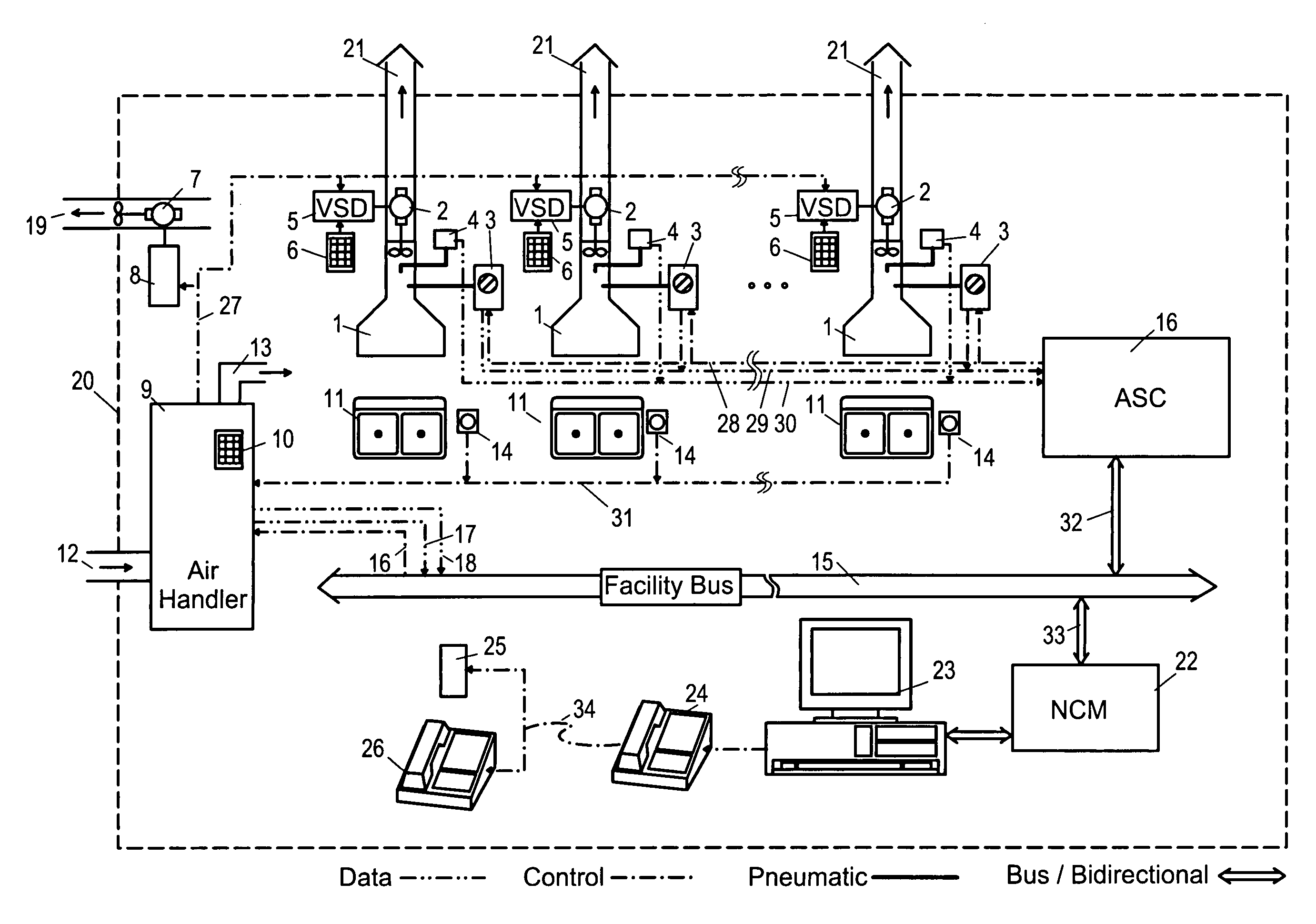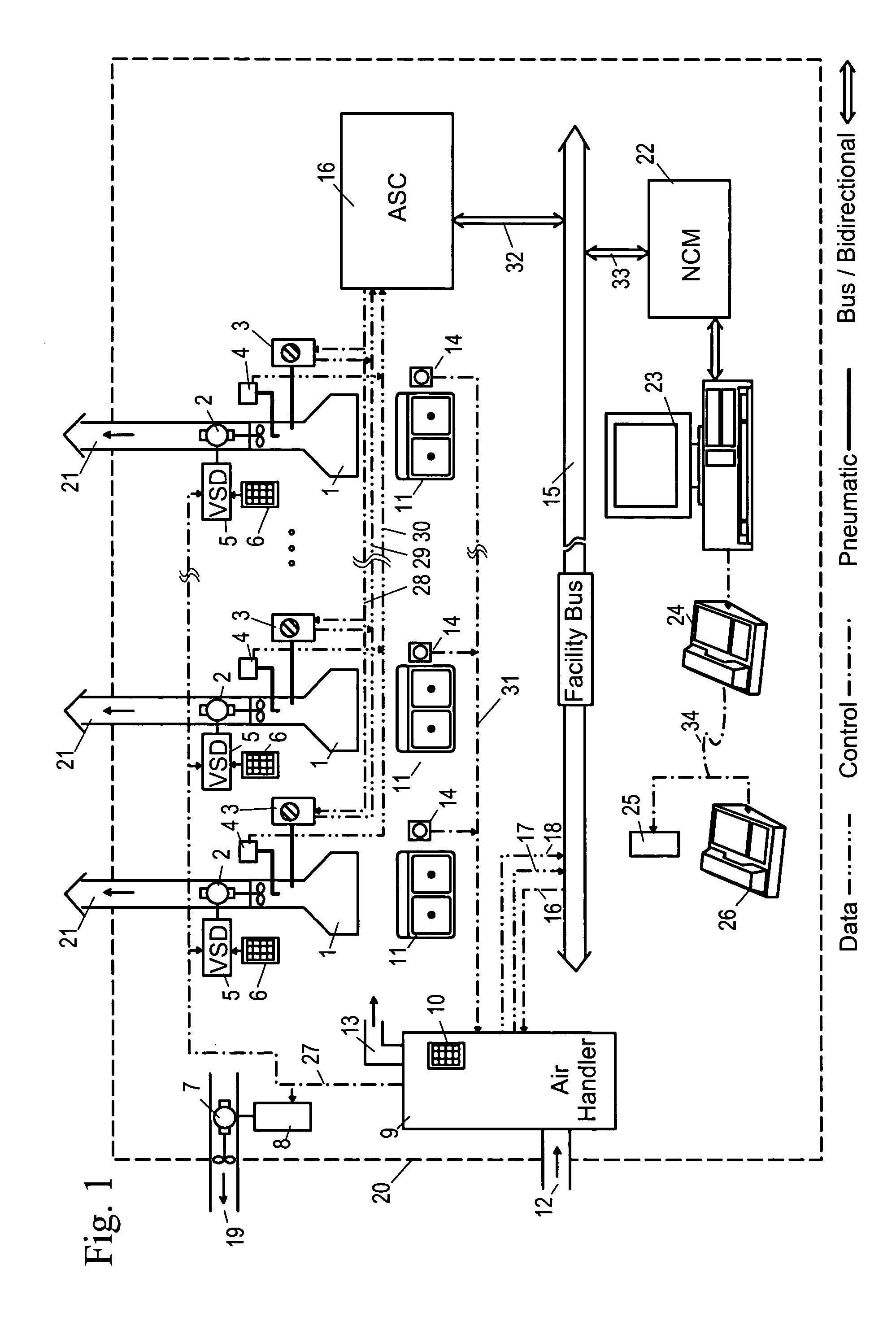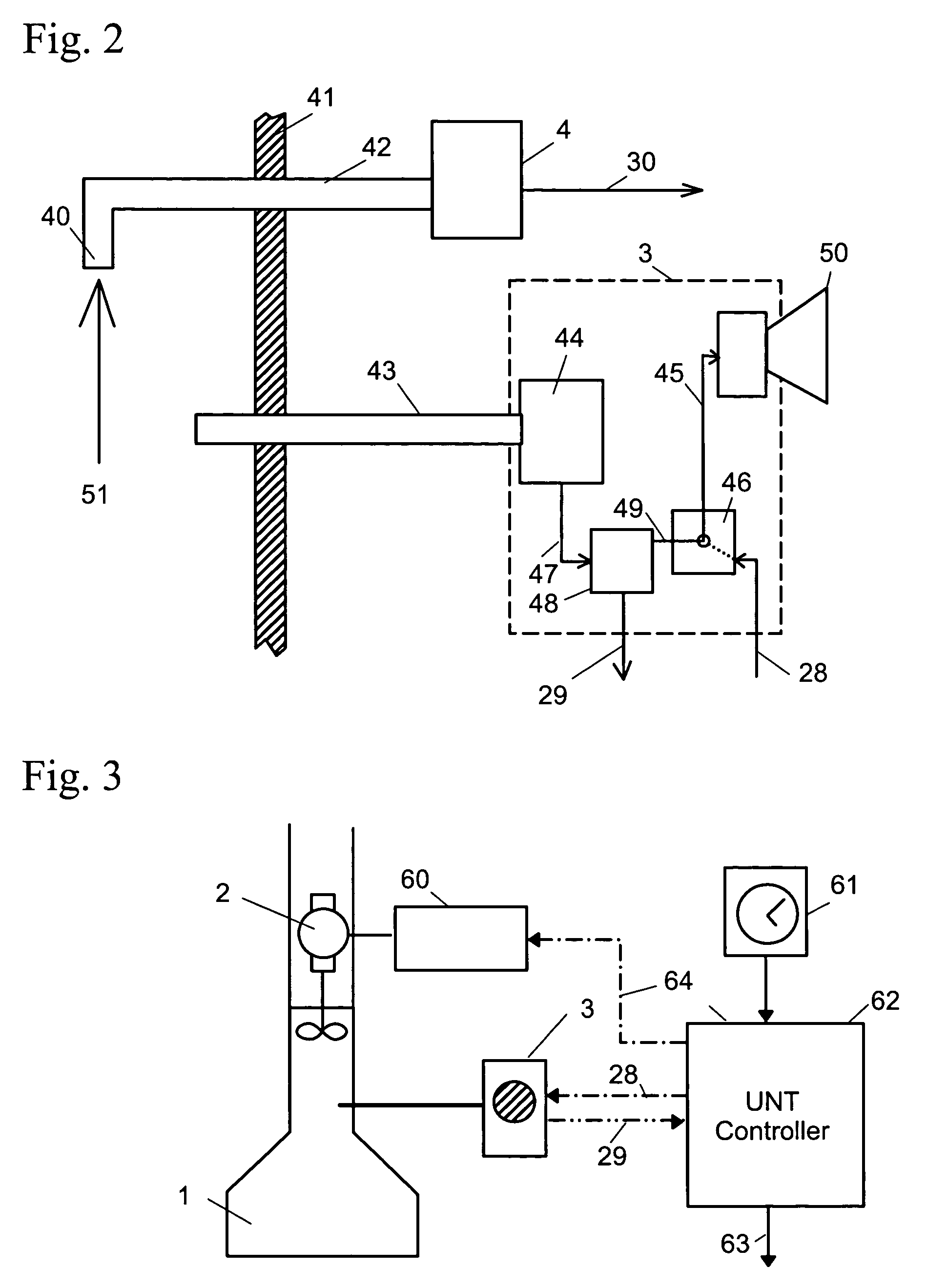Air flow monitoring and control system with reduced false alarms
a technology of air flow monitoring and control system, which is applied in ventilation systems, heating types, stoves or ranges, etc., can solve the problems significant air being pulled from the interior of the building and exhausted to the atmosphere, and it is no longer feasible to depend on leakage around and through windows and doors to replace the extracted air flow. , to achieve the effect of reducing air flow
- Summary
- Abstract
- Description
- Claims
- Application Information
AI Technical Summary
Benefits of technology
Problems solved by technology
Method used
Image
Examples
Embodiment Construction
[0020]FIG. 1 shows a block diagram of the invention, as it would be implemented in a laboratory building (20) having a number of fume hoods (1). It will be understood that the invention may be used in other applications than fume hoods, wherever there are apparatus which exhaust air from a building, such as spray booths, assembly line ventilators for chemical baths, range or industrial cooking hoods, etc. Also, although the example of FIG. 1 is shown with a single air handler with three associated fume hoods and an exhaust fan, the invention may also be used with any mixture of air handlers, exhaust devices, building zones, etc.
[0021]Referring to FIG. 1, the dashed line represents a laboratory building (20) or possibly an air handling zone within a larger facility. Outside air (12) is drawn into air handler (9), heated or cooled as required (and possibly filtered, humidified or de-humidified depending on individual building needs), and conditioned air (13) is sent through the normal...
PUM
 Login to View More
Login to View More Abstract
Description
Claims
Application Information
 Login to View More
Login to View More - R&D
- Intellectual Property
- Life Sciences
- Materials
- Tech Scout
- Unparalleled Data Quality
- Higher Quality Content
- 60% Fewer Hallucinations
Browse by: Latest US Patents, China's latest patents, Technical Efficacy Thesaurus, Application Domain, Technology Topic, Popular Technical Reports.
© 2025 PatSnap. All rights reserved.Legal|Privacy policy|Modern Slavery Act Transparency Statement|Sitemap|About US| Contact US: help@patsnap.com



